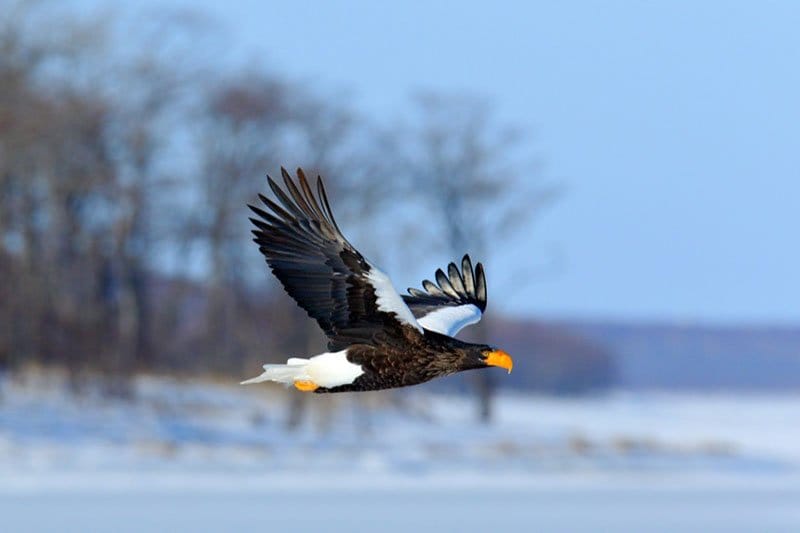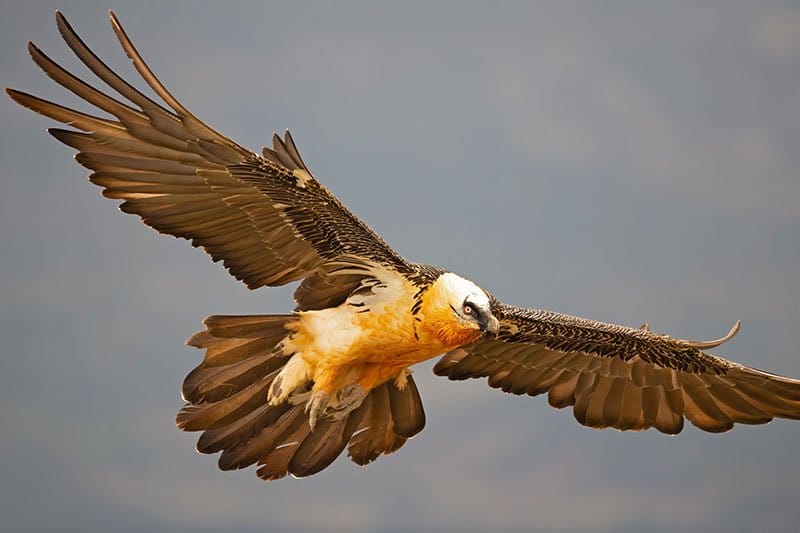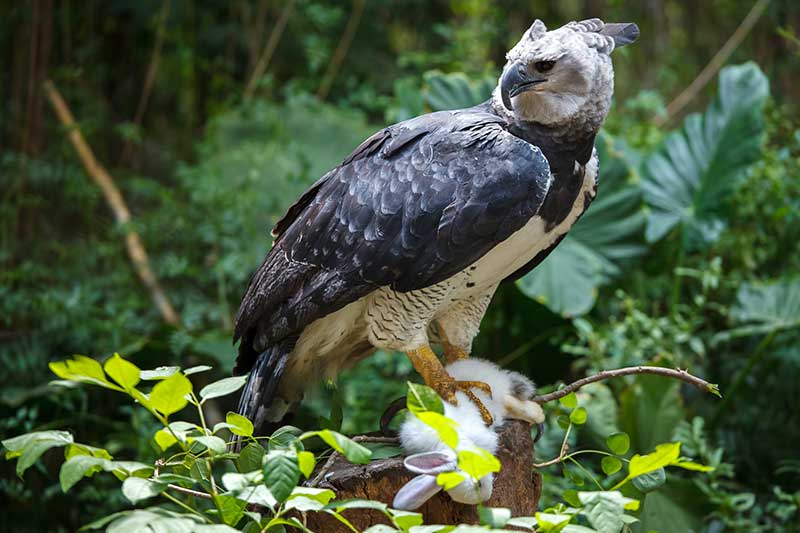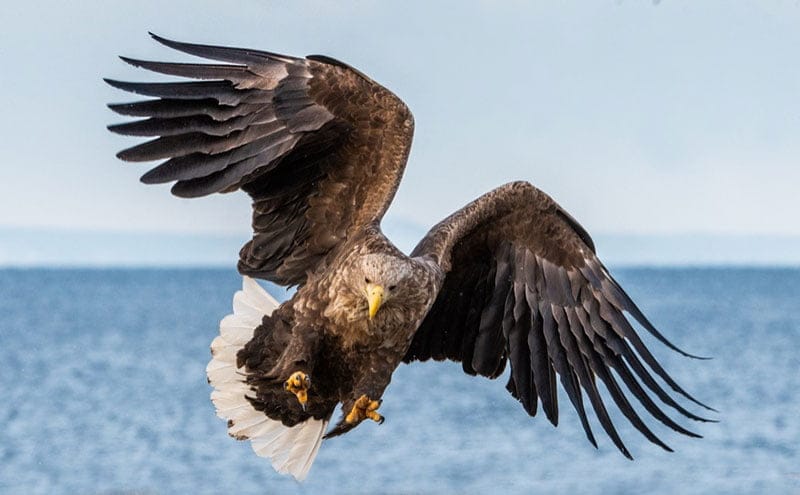Main Menu

The Andean condor is considered the largest bird of prey and one of the largest flying birds in the world. Males typically weigh 12.5 kg, while females average 10.1 kg. It has a wingspan of 283 cm, and the largest wing surface area of all birds.
Its plumage is predominantly black, with a distinctive ruff of white feathers at the base of the neck and large white panels on its upper wings. The head and neck are red and mostly bare. While males and females look similar, the male’s wing panels are more prominent, and he also has a dark red caruncle on his crown and a wattle on his neck.
The Andean condor is found in the Andes Mountains and along the adjacent Pacific coasts of western South America.

Blakiston’s fish owl is the largest owl species in the world. Males typically weigh between 2.95 and 3.6 kg, while females, which are about 25% larger, can reach up to 4.6 kg. It measures between 60 and 72 cm in length, just slightly shorter than the great gray owl, though it has a much heavier body mass.
It has buffy-brown upperparts streaked with darker brown, while its paler underparts have lighter streaking. It has a white patch on its throat, yellow eyes, and ragged ear tufts that hang to the sides. In appearance and body structure, it closely resembles eagle-owls, particularly the Eurasian eagle-owl.
Blakiston’s fish owl is native to China, Japan, and the Russian Far East, where it inhabits mature boreal forests near streams, floodplains, and wooded coastlines.

Steller’s sea eagle is a massive bird of prey belonging to the genus Haliaeetus. Females, which are significantly larger than males, typically weigh between 6.2 and 9.5 kg, while males range from 4.9 to 6.8 kg. Their weight can vary depending on seasonal food availability and overall health. Females measure around 100 cm in length, while males are slightly smaller at about 90 cm, just shorter than the harpy eagle and the Philippine eagle. With a wingspan of up to 250 cm, it is one of the largest eagles in the world.
It has dark brown or black plumage with a snow-white tail, belly, and shoulder patches. A rare dark morph exists, which lacks most of the white except for the tail. Its eyes, bill, legs, and feet are a bright yellow.
Steller’s sea eagle is native to coastal northeastern Asia, including Russia, Korea, Japan, China, and Taiwan. It breeds in floodplain forests and migrates to coastal areas during the winter.

The gyrfalcon is the largest falcon in the world, comparable in size to the largest buzzards. Females, which are larger and more robust than males, typically weigh around 1.6 kg, measure between 51 and 65 cm in length, and have a wingspan of 124 to 160 cm. Males are smaller and more slender, weighing about 1.1 kg, with a length of 48 to 61 cm and a wingspan of 110 to 130 cm. An exceptionally large female recorded in eastern Siberia weighed over 2.6 kg.
The species is polymorphic, meaning it comes in different colour variations, or “morphs”, including white, silver, brown, and black. White gyrfalcons are the only predominantly white falcons, while the rare black morph appears to occur only in females. Breeders have been unable to successfully breed males darker than slate grey.
The gyrfalcon breeds in the high latitudes of the Arctic coasts and tundra, North American islands, and Siberia. For centuries, it has been highly prized in falconry, and during the medieval era, it was considered a bird fit for royalty.

The Eurasian eagle-owl, often simply called the eagle-owl, is one of the most widespread owl species. Females typically weigh between 1.75 and 4.6 kg, while males are smaller, ranging from 1.2 to 3.2 kg. It has a wingspan of 130–180 cm, though in some individuals the wings can reach up to 200 cm. Its body length varies from 56 to 75 cm.
There are at least a dozen subspecies, and their plumage can be highly variable. The owl’s upperparts are mottled, while its underparts are finely streaked. Its facial disc is tawny with black and brown speckles, and the chin and throat may appear white. It has large, distinctive ear tufts, deep orange eyes, a black bill, and black legs and feet.
This adaptable owl is found across much of Europe, including Scandinavia, as well as in Asia and parts of northern Africa. It thrives in a wide range of habitats, from coniferous forests and grasslands to rocky canyons and sea cliffs.

The martial eagle is the largest eagle in Africa and the only member of the genus Polemaetus. It is highly sexually dimorphic, with females being significantly heavier than males despite only being about 10% longer. Males typically weigh between 2.2 and 3.8 kg, while females range from 4.45 to 6.5 kg. On average, martial eagles measure around 85 cm in length, with a wingspan of 188 to 240 cm.
It has dark brown upperparts and upper chest, while its underparts are mostly white with sparse black spotting. Its head is brown, with a short, erect crest. It has yellow eyes, a pale greenish bill and legs, and black talons.
Martial eagles are native to sub-Saharan Africa, where they inhabit open woodlands, plains, and semi-desert regions.

The Philippine eagle is often regarded as the world’s largest eagle in terms of length and wing surface, and the third largest by weight and overall bulk. Females are larger, averaging 6.0 kg, while males typically weigh around 4.5 kg. It measures between 86 and 102 cm in length, with a wingspan ranging from 184 to 220 cm.
It has dark brown upperparts with pale feather edges, contrasting with white underparts. A distinctive, shaggy, mane-like crest crowns its head, and dark markings surround its blue-grey eyes. The beak is silvery-grey with a black tip, while its legs and feet are yellow.
Endemic to the Philippines, the species is found on four major islands – eastern Luzon, Samar, Leyte, and Mindanao – where it inhabits both lowland and montane forests.

The bearded vulture, also known as the lammergeier or ossifrage, was traditionally classified as an Old World vulture but is now considered part of a distinct lineage within the Accipitridae family, along with the Egyptian vulture. It weighs between 4.5 and 7.8 kg, with females being slightly larger than males. Measuring 94 to 125 cm in length, it has a wingspan of 231 to 283 cm.
It has slate-grey upperparts and rusty-orange underparts. Unlike most vultures, it is not bald, but has a cream-colored forehead, a black band across the eyes, and bristles under the chin, which give the species its name. It has white eyes with a bright red border, a yellow beak, and feathered legs.
The bearded vulture has a broad range, spanning southern Europe, eastern Africa, and parts of Asia. It inhabits remote mountainous regions with steep terrain, where it thrives as a scavenger specializing in feeding on bones.

The golden eagle is the most widely distributed eagle species in the world, found across the Northern Hemisphere. Six subspecies are recognised, varying in size and plumage colouration. It measures between 66 and 102 cm in length, with a wingspan ranging from 180 to 230 cm, making it the fifth-largest wingspan among eagle species. Females are larger than males, with the size difference being more pronounced in larger subspecies. For instance, in the Himalayan golden eagle (A. c. daphanea), females are about 37% heavier than males, weighing 6.35 kg compared to 4.05 kg. Across the species as a whole, males average around 3.6 kg, while females typically weigh 5.1 kg.
Golden eagles have mostly dark brown plumage, with some grey on the inner wings and tail, and a distinctive golden-brown nape. Their tarsal feathers range in colour from light golden to white. The bill is horn-coloured with a dark tip and a yellow cere, while the legs and feet are bright yellow.
It is found across Eurasia, North America, and parts of North Africa, inhabiting a wide range of open and semi-open landscapes, including grasslands, heathlands, steppes, and mountainous regions.





